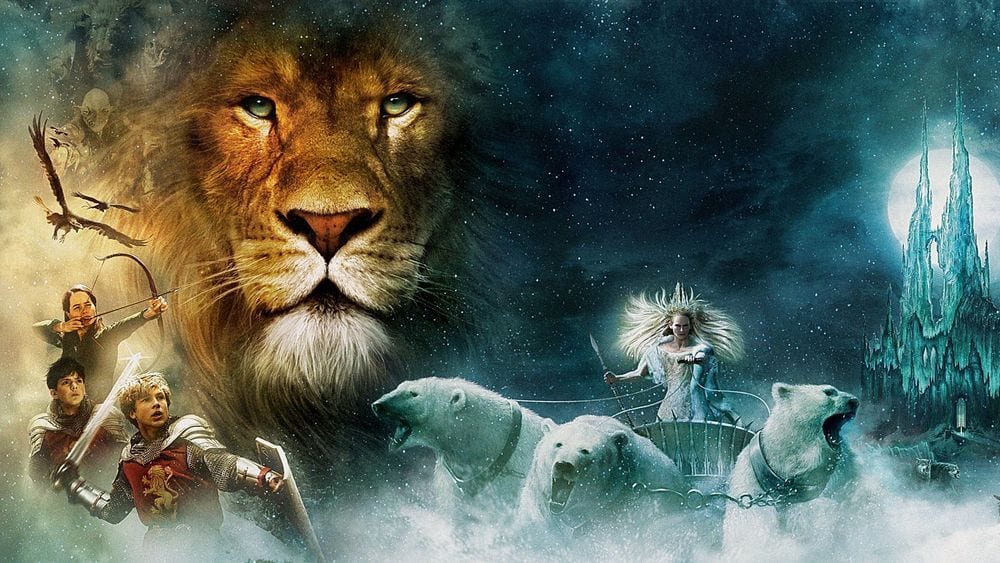Cinema is timeless and universal, but is also contextualised by each viewer. Upon watching a film, that film becomes a part of the viewer’s sense of identity: representative of a time, person, or feeling. With this in mind I have endeavoured to select films which hold some sort of personal significance to me.
Cinema combines aesthetics, music, storytelling, and emotion. It is this holistic approach to expression that particularly endears me to cinema. I enjoy films scattered with interesting ideas, fun idiosyncrasies, and unassuming yet captivating characters.
The Chronicles of Narnia: The Lion, The Witch and The Wardrobe (2005)
dir. Andrew Adamson
I thought for a long time about which children’s film I should include on this list. I consider myself fortunate to have grown up at a time where such a rich selection of films aimed at children were produced.
All at once, I recalled the day I went to see the first ‘Narnia film’ with my grandparents. I can recall precise details of that day, that we had snuck in sweets and that the scent of popcorn was unusually strong. The film itself mesmerised me. Until watching this film I hadn’t been a particularly keen reader. After watching it, I read with speed my brand new copy of C. S. Lewis’ admired novel. It became obvious that this film desperately needed to be on this list.
It could be argued that the mark of a good film is that its content follows the viewer beyond the cinema, casting an influence for years, rather than for a few hours. This is the film that we’ve always reminisced about when discussing beautiful cinematography, with good reason. A mystical, elegant world coated in white snow cradles a vibrant, complex storyline.
Night of the Living Dead (1968)
dir. George A. Romero
I love horror films and this is perhaps the first one I watched. It is also considered the first of its genre: the first true zombie film.
Night of the Living Dead’s low budget does not affect its tone or influence. It is hauntingly unnerving. The monotonous warning that “They’re coming to get you, Barbra” will ricochet in your ears for the duration of the film. Night of the Living Dead does not rely on grotesque imagery, as many modern horror films do. The characters in Night of the Living Dead fear the concealed, approaching the unknown with apprehension and agitation.
I enjoy horror films which express some form of social commentary by pushing the limits of human psychology. This is a particular forte of Romero. I became fascinated with the conflict between characters in Night of the Living Dead and spent a substantial amount of time contemplating how I would respond to similar predicaments. Are people selfish? How does terror affect people? Do people adapt well to new situations?
https://www.youtube.com/watch?v=0TAGtIQvebs
Pretty in Pink (1986)
dir. Howard Deutch
This film explores class divisions with unflinching realism, tracking the story of star-crossed lovers Andie, portrayed by Molly Ringwald, and Blane, portrayed by Andrew McCarthy. Blane is what working class Andie describes as a ‘richie’, one of the wealthy kids at her school. Anybody who remembers what it is like to be at school will be able to empathise with their situation. The social groups created in the school environment must be strictly adhered to. Andie and Blane learn that attempting to cross those barriers leads to fights and distress, but is it worth it?
The phenomenology of coming of age is unique, daunting, and fascinating. Pretty in Pink encapsulates the intensity of school life, comprised of euphoric highs and potent sadness in equal measure. Despite this, the film presents an unwavering tone of optimism. Pretty in Pink occupies a world where the bullies never win and where the iconic happy ending always seems in reach.
Pretty in Pink also forms a stylish snapshot of 80s youth culture. Its soundtrack features The Smiths and New Order, whilst its approach to fashion is innovative and striking. Andie is a skilled seamstress with a penchant for unusual pattern combinations and bold styles. Blending universal themes of youthful alienation with time specific fashion gives Pretty in Pink a unique charm. It is a quintessential representation of the 80s, but also transcends the era entirely. It is one of my mum’s favourite films and I imagine this is why.
Do the Right Thing (1989)
dir. Spike Lee
Having included one of my mum’s favourite films it feels appropriate to also include one of my dad’s favourite films: Do the Right Thing.
This film represents everything I think cinema should be. Its meaning is not obscured by excessive action scenes or a contrived plot. The entirety of the film takes place on one summer’s day in 1989. It effortlessly blends compelling visuals with a powerful soundtrack. Watching Do the Right Thing truly evokes the feeling of a blistering summer’s day and the formidable rhythm of Public Enemy’s ‘Fight the Power’ punctuates this heat.
Do the Right Thing also strikes the balance between serious social commentary and fun quirks. Samuel L. Jackson’s character, a radio DJ providing amusing commentary on various mundane events throughout the day, is a highlight. Do the Right Thing is a nuanced yet candid discussion of race relations and violence. The joy is that it doesn’t answer the debate it puts forward. The viewer is left to consider precisely what it would be to do the right thing. Portrayed by Bill Nunn, Radio Raheem’s knuckle dusters, one emblazoned with ‘LOVE’, the other with ‘HATE’, summarise the entirety of this debate in one motif.
Honourable Mentions: Psycho (1960), The Graduate (1967), A Clockwork Orange (1971), Nikita (1990), Basquiat (1996), Monsters, Inc. (2001), Wild Tales (2014).
Words by Lily Blake
